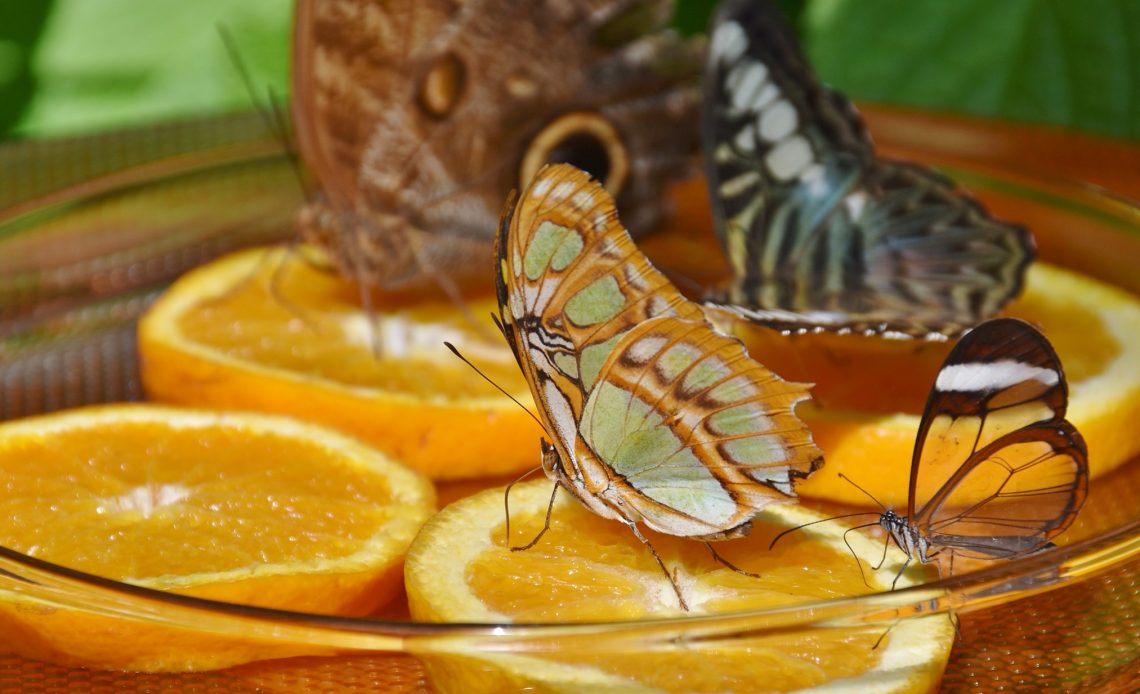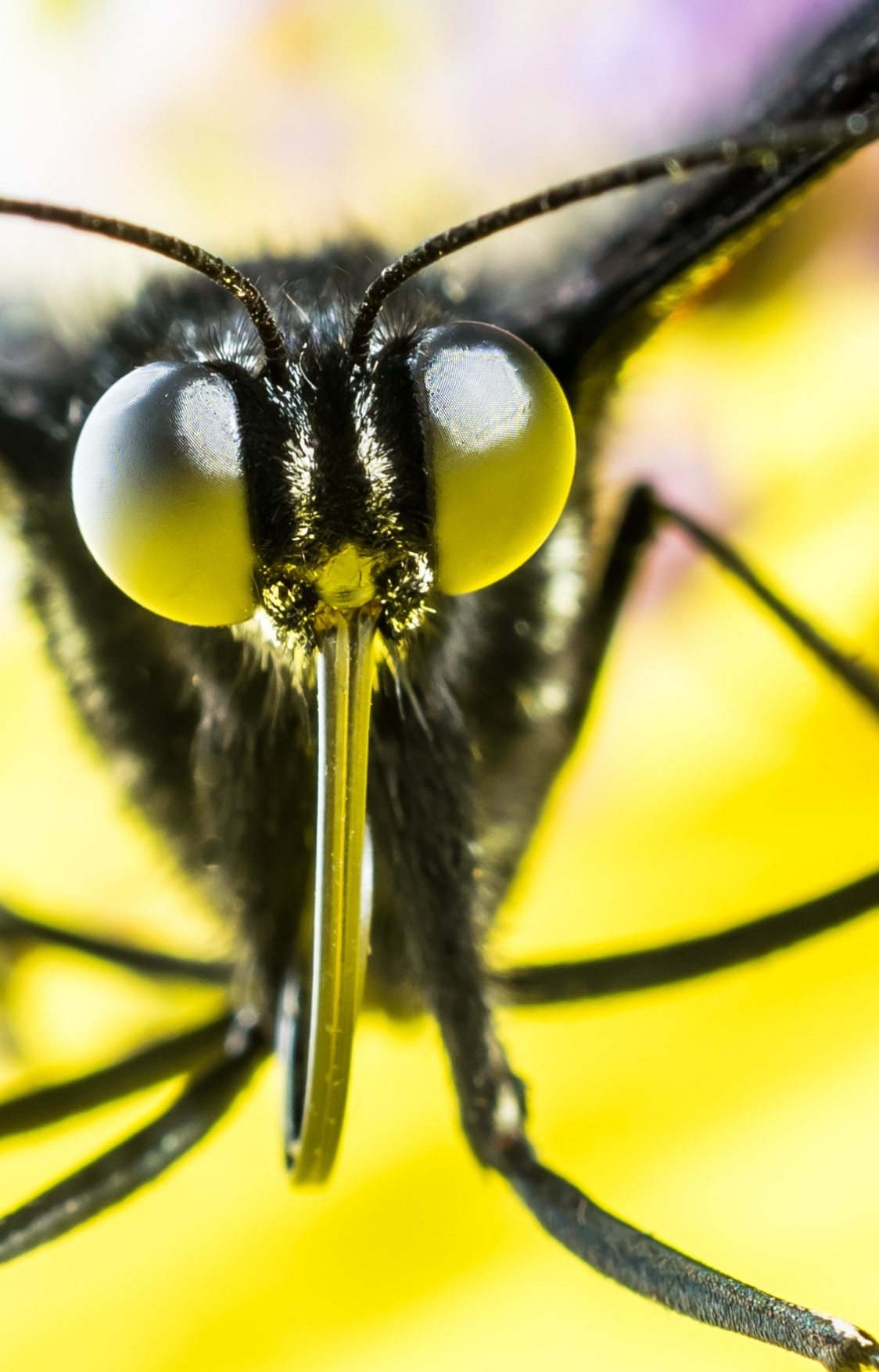

We’re here to help! Wild Yards is a completely free website that is 100% dedicated to helping you create a wildlife-friendly, sustainable yard. Read more
WildYards is reader-supported. When you buy a product through a link on our site, we may earn a comission. Every product is independently selected by our (obsessive) editors and our reviews are unbiased and objective. Read more about our mission or our privacy policy.
Like many gardeners, you probably want to learn the best ways to attract more butterflies to your yard. Aside from planting more flowers, you might know that butterflies enjoy fruit as well as nectar, but what fruits can you use to bring them fluttering over your fence? Do butterflies like oranges?
Butterflies love oranges. With their high sugar content, abundant juice, and soft pulp, oranges are the perfect fruit to entice butterflies to your yard. In fact, butterfly houses in zoos and botanical gardens will often put sliced oranges out for their butterflies. Ripe or overripe oranges are one of the best fruits to put out to entice local butterflies.
Do butterflies like orange slices?
If you’ve ever looked closely at a butterfly’s face, you’ve probably seen a long tube coiled up where you would think their mouth might be. This is called a proboscis, and it functions like a straw; the butterfly uses it to probe into small spaces and suck up any food. While this proboscis is very good at poking into nooks and crannies, it does mean that butterflies can only eat liquids, meaning their diet is quite limited.

Butterflies primarily feed on nectar from flowers, but they also enjoy tree sap, fruit juice, dissolved minerals from puddles, and even salty bodily fluids like blood, sweat, or tears. If you work out during the summer, you might find butterflies land on you to taste your delicious sweat!
In essence, if you want to feed fruit to butterflies, the fruit must either have very soft pulp or be full of juice, as butterflies can’t eat hard flesh like that of ripe apples. This is partly why butterflies prefer overripe fruit; as the fruit begins to rot, the pulp breaks down into a liquid, making it easier for butterflies to eat.
Because orange slices are very rich in sugar and literally dripping with juice, this makes them great fruit for butterflies! The only reason they don’t feed upon oranges on the tree is that they are unable to tear through the tough peels. Slice or halve the oranges for them, and watch the butterflies descend upon the juice!
How do you give oranges to butterflies?
Butterflies seek out food via bright colors, sweet scents, and sugary tastes. You might not know this, but butterflies actually have taste buds on their feet! Butterflies will always land on something colorful first to see if it tastes good. If they taste sweetness, they’ll unroll their proboscis and have a drink.
For all of these reasons, the best way to feed fruit to butterflies is to lay them out someplace where the colors are visible, the scents can carry on the wind, and the butterflies can land easily to have a taste.
A small platform or tray set out in the sun is one of the simplest ways to leave oranges out for hummingbirds. The bright orange in the sunlight is an attractive color, and the warmth will help bring out the fruit’s natural fragrance. Simply slice the oranges, score the pulp against the grain with a knife or a fork, and lay them out.
Of course, you might be concerned about pests being attracted to your garden if you start leaving rotten food lying around. Ants, raccoons, and wasps will be just as attracted to fruit as butterflies, and are much less desirable as visitors!
If you are concerned about ants and raccoons, a hanging butterfly feeder might be the best solution. A feeder meant to hold suet for wild birds can just as easily hold sliced or chopped fruit for butterflies, and be much harder for pests to access.
An even simpler solution could be to spike a halved orange onto a thin pole, or tied a string around it and hang it from a tree. Alternately, lay the orange slices in a shallow dish of water. Ants will be unable to reach them, but butterflies will have no trouble.
There’s no real way to avoid wasps being attracted to fruit, however. But there are ways to attract butterflies instead of bees and wasps if that’s what you’d prefer.
Do oranges attract butterflies?
Thanks to climate change and particularly the increasingly warm autumns, butterfly populations are declining across the country. This includes even normally common species like the cabbage white. It’s theorized that the butterflies are suffering increased stress thanks to the warmer fall temperatures, as well as increasing the active period of predators such as spiders and reptiles.
But most relevantly, the increasing temperatures are reducing the amount of food available for butterflies in the fall. And this is one area in which the average gardener can be a big help! Leaving fruit out for butterflies, especially in the fall, can offer a much-needed boost to the local population.
The population of monarch butterflies, in particular, has declined enormously in the past decade. So why not give these beautiful, fragile creatures some help by raiding your fruit bowl?
Butterflies are a wonderful sight to see in any garden and provide a vital service to the local ecosystem. An easy way for us to give back to them is by providing them with the fruit they love. Sliced and scored oranges are an easy treat you can provide to your local butterflies, and are sure to bring them flocking to your wild yard.
